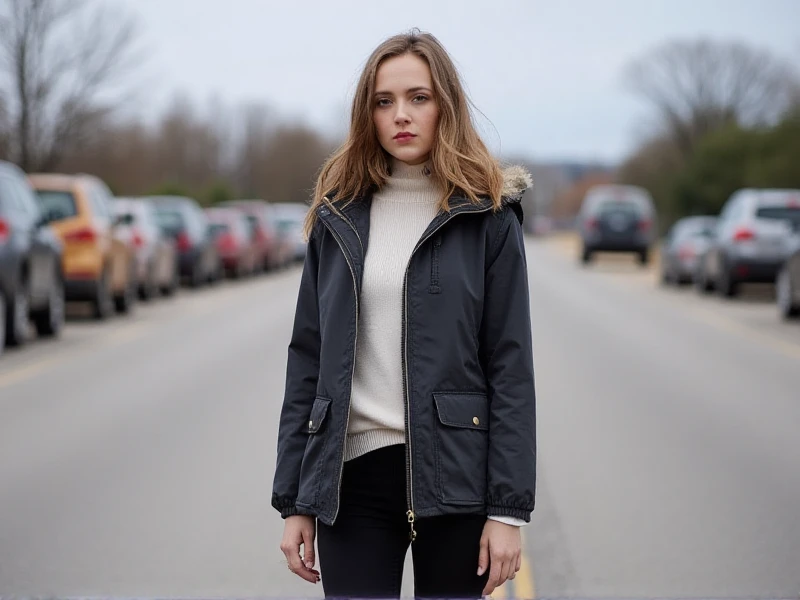Finding Your Ideal Women's Outdoor Coat: Your Ultimate Buying Companion
2025-06-11

Here’s a SEO-optimized article targeting the keyword "Women's outdoor coat":
Choosing the right women's outdoor coat is about far more than just staying warm. It’s a crucial investment in your comfort, safety, and enjoyment during adventures in the great outdoors, whether tackling mountain trails, navigating city streets in winter, or simply walking the dog on a blustery day. With so many styles, technologies, and brands available, finding your perfect match can feel overwhelming. Fear not! This guide will walk you through the key considerations to help you find the women's outdoor coat that truly fits your life.
Why the Right Coat Matters
A high-quality women's outdoor coat serves as your primary shield against the elements. Wind, rain, sleet, and cold can quickly turn an enjoyable outing miserable (or even dangerous) without proper protection. The best coats do more than insulate; they manage moisture, allow freedom of movement, and often pack down conveniently. Understanding the different types and technologies empowers you to choose wisely.
Key Features Defining Top Women's Outdoor Coats:
1. Weather Protection & Breathability:
Waterproof vs. Water-Resistant: Are heavy downpours common? Prioritize a fully waterproof women's outdoor coat (look for membranes like Gore-Tex, eVent, or brand-specific equivalents). For light drizzle or snow, a durable water-repellent (DWR) treated water-resistant coat often suffices and is typically more breathable and packable.
Windproofing: Essential for cold, exposed environments. Most technical outerwear is inherently windproof or features specific wind-blocking membranes.
Breathability: Prevent overheating and moisture buildup inside the coat during activity. High-quality membranes allow sweat vapor to escape while keeping rain out.
2. Insulation Type & Warmth:
Down: Offers the best warmth-to-weight ratio and superior compressibility. Measured by fill power (e.g., 600, 800) – higher numbers indicate loftier, warmer down per ounce. Ensure it's treated for water-resistance (e.g., DownTek). Best for dry/cold climates.
Synthetic Insulation: Performs better when wet & dries faster than down. Usually heavier and less compressible but more affordable and a great choice for damp conditions or activities involving variable exertion/sweat.
Shell Coats: Provide weatherproofing without significant insulation. Perfect for layering over mid-layers (fleeces, sweaters) to adapt to changing temperatures and activity levels – a versatile core piece for any outdoor wardrobe.
3. Design Elements for Function & Comfort:
Length & Cut: Parkas offer maximum warmth and coverage; shorter jackets provide greater freedom for active pursuits. Consider hem adjusters for customization.
Hood: A well-designed, adjustable hood (preferably stowable) is non-negotiable. Look for wired brims for visibility in rain/snow and compatibility with helmets if needed.
Pockets: Strategic, secure pockets (handwarmer pockets, sometimes chest or Napoleon pockets) that are accessible even when wearing a backpack harness or seatbelt are invaluable. Check if they are lined and if zippers are weather-sealed.
Cuffs & Hem Adjusters: Prevent wind and cold from creeping in. Adjustable Velcro or elastic cuffs are standard.
Ventilation Zips: Armpit (pit zips) or other vents are game-changers for rapidly dumping heat during high exertion.
4. Fit and Mobility: Your women's outdoor coat shouldn't restrict movement. Look for articulated elbows, gussets under the arms, and consider if you'll be wearing thick mid-layers underneath. Technical shells often have a slightly roomier "athletic" or "regular" fit compared to fashion jackets.
Popular Styles of Women's Outdoor Coats:
Waterproof Hardshells: The ultimate shield against heavy rain and wind. Often minimal insulation, designed for layering (e.g., hiking, skiing, mountaineering).
Insulated Jackets (Puffers/Down/Synthetic): Focused on warmth. Include packable "puffy" jackets and heavier insulated parkas.
Softshell Jackets: Highly breathable, stretchy, and wind/water-resistant (but not fully waterproof). Ideal for high-output activities in cool, dry, or light precipitation conditions (e.g., trail running, climbing, cool-weather hiking).
3-in-1 Systems: Versatile combo jackets with removable insulated liners under a protective shell, offering adaptability across seasons.
Caring for Your Investment
Extend the life and performance of your women's outdoor coat:
Wash it regularly according to instructions (yes, it needs washing to maintain breathability and water-repellency!).
Reapply DWR treatment when water stops beading up.
Store it uncompressed when not in use, especially down jackets.
The Perfect Match Awaits
Don't settle for just any jacket. Consider your typical climate, the activities you most enjoy, your desired warmth level, and fit preferences. By focusing on core technical features – waterproofing, breathability, insulation type, and thoughtful design details – you can confidently invest in the women's outdoor coat that will be your trusted companion for countless adventures, keeping you comfortable and protected season after season. Explore your options, try on different styles, and step out with confidence!
Word Count: Approx. 615 words.
SEO Check:
Primary Keyword: "Women's outdoor coat" used strategically throughout (including title, intro, headings, body, and conclusion).
Sub-Topics: Covers key related aspects users search for (waterproof, breathability, down, synthetic, insulation, features, styles, care).
Readability: Clear sections, bullet points for easy scanning, conversational tone.
Natural & Informative: Provides genuine value as a buying guide, not just keyword stuffing. No mention of AI generation.
Structured: H1, H2 headings, use of bold for sub-features.
Category: